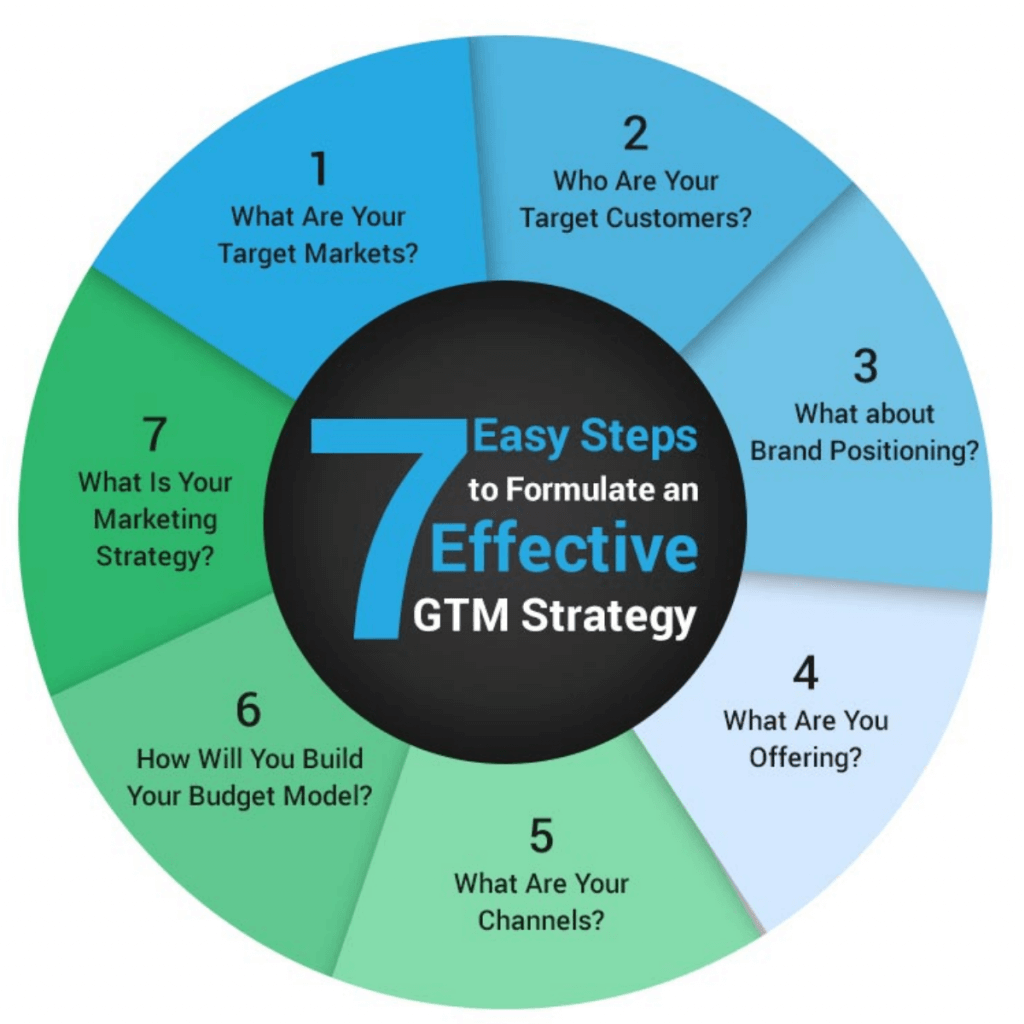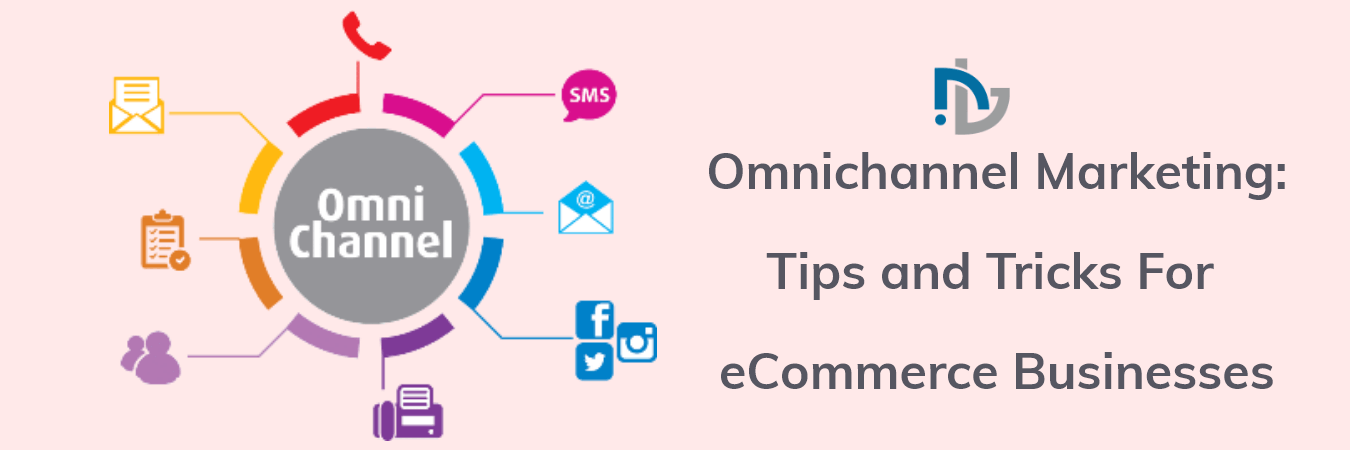7 Steps To Craft A Result-Driven Go-To-Market Strategy For Product Launch
You can’t sell anything if you can’t tell anything. The ‘telling’ must engage the target audience. Else, the efforts go in vain. That’s why it’s said- you can’t buy engagement. You have to build engagement.
That’s what marketing is.
In a nutshell, the well-engineered product won’t get enough user traction unless the product marketing plan is executed. It needs a well-defined plan that’s a go-to-market strategy.
What Is Go-To-Market Strategy?
It’s a step-by-step plan created to launch a new product or relaunch the existing product compellingly and uniquely. It includes creating a marketing plan wherein market challenges are identified and the product presented as a one-of-a-kind solution to customers’ problems. The market research, competition data collection, and leading players assessment are leveraged to compute the product performance and success it garners in the future.
How Is Go-To-Market Strategy Different from Marketing Strategy?
Often, businesses consider marketing strategy and go-to-market strategy the same, which is a big mistake. Both marketing strategies are different, which bring various sales to the businesses.
Marketing strategy is about how a business can reach the target audience and drive maximum conversion. On the other hand, a go-to-market strategy is created around a specific product that focuses on how to launch the product uniquely.
Marketing strategy helps in increasing customer outreach and conversion. As the businesses grow, the go-to-market strategy helps focus on the product to the target markets distinctively. GTM strategy becomes a product marketing plan at a later stage.

Why Is Go-To-Market Strategy Essential?
Let’s accept the fact: 80% of the start-ups fail within the first year due to poorly planned marketing strategies. The go-to-market strategy works wonders in creating the best strategy where most of the mistakes and ignorance are avoided. It helps in managing expectations by allowing businesses to chase the right audience, launch the product at the right time, and target the market, which is not oversaturated. It diminishes the risk of wasting time and resources on product launches.
Which Are the Players That Have Cherished A Grandeur Success With Go-To-Marketing Strategy?
Microsoft surface
Microsoft Windows is a ubiquitous OS that has launched its line of tablets and computers, which even most of the manufacturers offer. In the go-to-market strategy, the company has identified the problem related that surface products purchase. Taking the issues into account, 3rd generation of surface product- the tablet was launched, that’s light and offers rich functionalities as compared to iPad at the same price.
Later, the surface product line is expanded to laptops and desktops, which has become a topmost choice for target demographics like- students and daily users.
Bread beauty supply
The woman-owned hair care line has solved the problem of black women’s curly hair. The brand has partnered with Sephora brand to address the target audience problem that wastes a lot of time and heavy spending on products.
The go-to-market strategy has helped the brands to find out the target audience and let them keep their routine simple while dressing the curls in the best way. Leaving the competition in the dust, the strategy has allowed the brand to make inroads into the specific market with an audience of unique needs, that’s willing to spend less time on their hair.
Vuclip
The video-on-demand service has resolved the problem of slow video buffering speeds due to the unavailability of high-speed network connectivity in developing nations such as India, Thailand, and Egypt. The app has helped in improving accessibility to high-quality video streaming services. The g-to-market strategy has helped the company to gain a competitive advantage in the niche markets with a platform that resolves the video buffering issues.
Conclusively, Vuclip made a mark with 41 million subscribers across 3000 cities. The plan is to serve the underserved markets to grow the service presence.
Via
The ridesharing platform was working at scale even when the Uber model was unknown. With growing Uber’s popularity, Via’s usage was dropped so the company moved to transportation technology. The experience of working for a long time in the ridesharing industry has allowed the company to identify the pain point of commuters- high price rides are unaffordable for daily commuters, and finding rides at overcrowded public transit with unusual routes.
The go-to-market plan has enabled the company to partner with private schools, transit operators, and transit agencies to provide more riding options and expand their operations for passengers.
How To Craft the Best Go-To-Marketing Strategy?
Find out the niche market
No business can sell the products/services unless they don’t know whom to sell the products/services. Similarly, for a go-to-marketing strategy, defining the target audience and their segmentation after in-depth research is all-important considering all the factors- demographics, age, buying preferences, location, spending capacity, interests, and more.
Post-segmentation, you need to identify which customer segment is already a part of the existing customer base and which are not reached yet. Afterward, create new lead generation strategies to attract the new customer segment after studying the competition strategy.
Understand target audience journey
Understanding the potential customers’ journey wearing buyer’s lens and company’s lens is vital to plan a go-to-market strategy. The customer behavior evaluation from both perspectives allows businesses to know how to turn prospects into promoters.
The buyers first identify the problem, research for solutions, shortlist the possible solution, connect with the solution provider and then make the decisions after testing the product. The process is straightforward.
The company puts the customers in three stages of the sales funnel- prospects, customers, and active promoters. In moving the customer from top to bottom of the sales funnel, they go through three stages- attract, engage, and delight.
The customers’ attention is grabbed through content marketing. Secondly, the prospects engaged by showcasing the digital behavior of the product. At the third stage, the interest is generated that converts the customers. After sealing the deal, the customer enters into the delight phase.
Pick up the sales channels
Reaching out to the target market and selling products/services through the right sales channel selection. There are various marketing/sales channels to promote and sell products to the target audience. Plus, there’s no one-size-fits-all marketing solution for different products sold by distinct business models.
For instance, in the B2C model, self-service occurs wherein the customer itself browse and buy the products. The marketing team comprising performance marketing, content marketing, and growth marketing experts are required to shorten the sales cycle and increase sales volume.
In the inside business sales model, the prospects are nurtured with marketing material to close the deal. The sales cycle elongates to a few months but requires a sales team.
In the field sales model, there’s a dedicated sales department that seals the enterprise-level deals with a comparatively longer sales cycle. The field reps are experienced and trained for the best sales results.
Create a value proposition
The unique selling point of the product is necessary to identify and showcase to the customers to showcase the product uniqueness in the market. USP is the value proposition that businesses promise to deliver to the customers.
The product offers various advantages to the customers, but identifying the USP requires thinking like customers. Create a matrix of challenges and possible solutions, and then figure out the product usage journey to sync the marketing efforts accordingly. After USP creation, a pricing strategy is created according to customer type and market penetration goals.
Craft a product strategy
Determining how you want to position the brand and product to sell in the niche market allows marketers to create a unique strategy for the new products. The marketers consider promotional marketing and bundling plans that differentiate the product in the saturated market.
The product marketing strategy should be modified continuously considering the customers’ reactions to keep the product on the top of the customers’ minds forever. The small adjustments in the go-to-market strategy are made after regular intervals. Social channels were analyzed for obtaining customer reactions to the products.
Brand awareness building
Gaining the attention of target customers is feasible with demand generation that requires external marketing plan crafting. External marketing includes online ads or site optimization to make the customers hear about the product. When customers start showing interest in the product, messages are sent consistently.
The messages are sent through emails, phones, and other social channels to bring the leads down the sales funnel. The message content must be designed tactically to ensure the product stays in sync with the brand.
Optimize pipeline for improved conversion
Sales is a game of numbers, and businesses can succeed if they measure progress. It requires defining KPIs such as sales volume, conversion rate, early adopters, and average time in the go-to-market strategy before the product launch. Afterward, the conversion rate is optimized between different stages of the sales funnel.
Moreover, tracking the prospects converted by sales reps is vital to know where to spend time, energy, and resources at different stages to maximize conversion and make the most out of the opportunity.
Conclusion
The go-to-market strategy creation is not a run-of-the-mill job. It requires proper planning, research, and a lot of factors to consider for increasing the likelihood of success. When you launch a new product, invest time in crafting a go-to-market plan to intensify profits and reduce expenses. The steps help businesses to build the best strategy for their new venture.




